Haemorrhages in a pig carcass: Don’t panic!
With the recent detection of cases of African Swine Fever (ASF) in wild boars
in Belgium, anyone can see that there is a certain risk of introduction of this disease into our territory. Also Classical Swine Fever (CSF) might be introduced. Therefore it is essential that all the actors involved in the pig sector are trained and alert. Two essential aspects for the control of these diseases are
biosecurity and a good system of
passive surveillance that ensures an
early diagnosis.
From the slaughterhouses we have a well defined role in this passive surveillance.
Although it is true that, given this disease characteristics, it is most likely to be detected through mortality outbreaks in farms or wild boar populations, the initial presentation of the disease can be very variable depending on: the virulence of the strain, the initial virus load, the immune status of the guests, etc. Therefore, it can not be ruled out that infected animals might arrive at the slaughterhouse.
In previous posts of the blog we have already reviewed the lesions, mainly hemorrhagic, caused by both
ASF and
CSF viruses in domestic pig carcasses.
What to do in case of suspicion?
- Report suspicion to hte comptenent authorities by telephone and following the procedure of Mandatory Declaration Diseases.
- Send URGENT laboratorial enquiry to SESC indicating the suspicion. In CReSA's laboratories PCR and RT-PCR will be performed detect the presence of ASF and CSF viruses, respectively. Samples will be submitted to the National Reference Laboratory for further confirmation.
What samples should be sent?
- If the suspicion is antemortem (animals that arrive with high fever or even sudden deaths during transportation): the sample of choice is blood with anticoagulant (EDTA: pink or purple tube), DO NOT use heparin since it can interfere with PCR.
- If the suspicion is postmortem (carcases with hemorrhagic diathesis lesions): refrigerated sample of spleen and/or tonsil and/or submandibular lymph node. Other lymph nodes (gastrohepatic, renal, retropharyngeal) or lung may also be referred. Additionally, we recommend sending samples of other lesioned viscera to try to reach a definitive diagnosis (liver, kidney, etc.).
Should any hemorrhagic lesion raise a suspicion of ASF/CSF?
Don't panic! Hemorrhagic diathesis lesions are not specific of an infection with ASF/CSF viruses, so to declare a suspicion, one must have a fair level of certainty.
However, in an epidemiological situation such as the current one, where we can not underestimate the risk of introducing the disease, we must also analyze all those inconclusive lesions that fit into the differential diagnosis of ASF/CSF.
Table with suggested criteria to differentiate a suspicion from other inconclusive findings that, in any case, should always be sent to SESC for laboratory analysis.
| Certainty level |
Criteria |
Actions |
| Inconclusive lesions |
- Only one animal (per batch) with clinical signs: fever, depression, erythematous skin lesions ...
- Only one animal (per batch) with hemorrhagic diathesis lesions.
- A single animal (per batch) that arrives dead suddenly during transport.
- Lesions clearly compatible with other diseases included in the ASF/CSF differential.
- For example: Erysipelas and PDNS.
|
- Send URGENT enquiry to SESC (+ refrigerated samples).
|
| ASF/CSF suspicion |
- Two or more animals (per batch) with clinical signs: fever, depression, erythematous skin lesions ...
- Two or more animals (in a batch) with hemorrhagic diathesis lesions.
- Two or more animals (in a batch) with sudden death during transport.
|
|
Below we can see images of two recent cases of carcass with hemorrhagic diathesis in which a diagnosis of ASF/CSF has been ruled out by PCR /RT-PCR.
Case 1: A single animal, mixed race female of 6 months, who presented extensive hemorrhagic lesions. ASF/CSF was ruled out, but no other lesions were observed to determine the cause of the hemorrhagic diathesis presented by the animal.
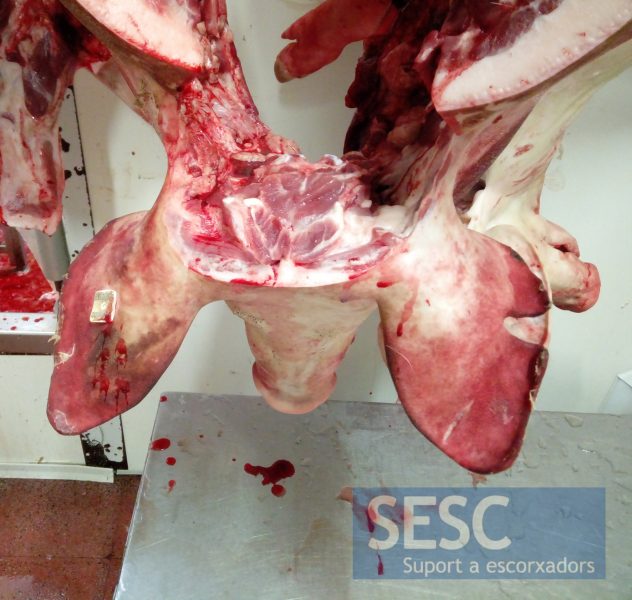
Hemorrhagic lesions on the skin of the ears.
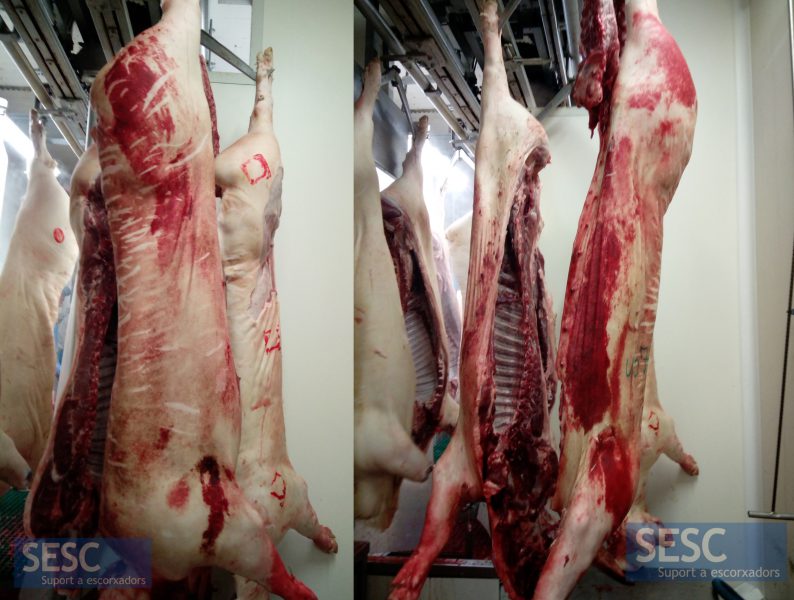
Extensive cutaneous hemorrhages.
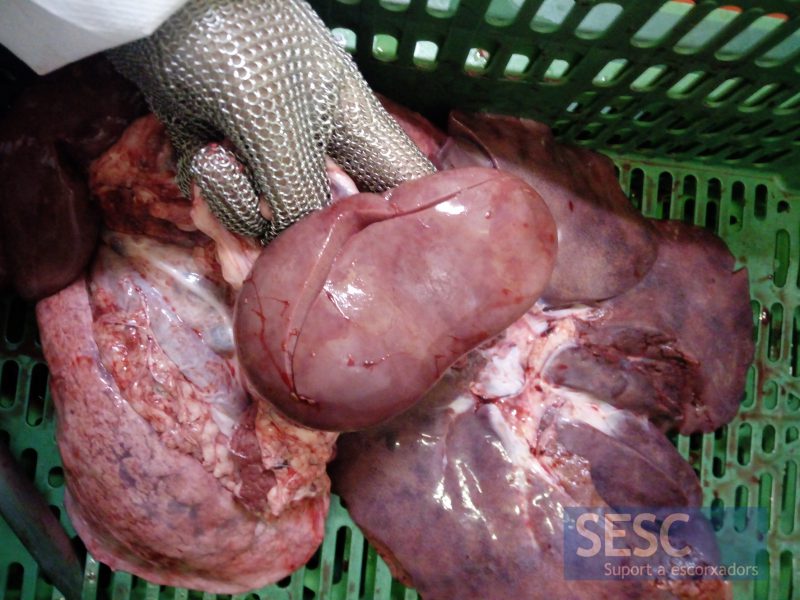
Absence of renal petechiae or reabsorption of blood to the lymph nodes.
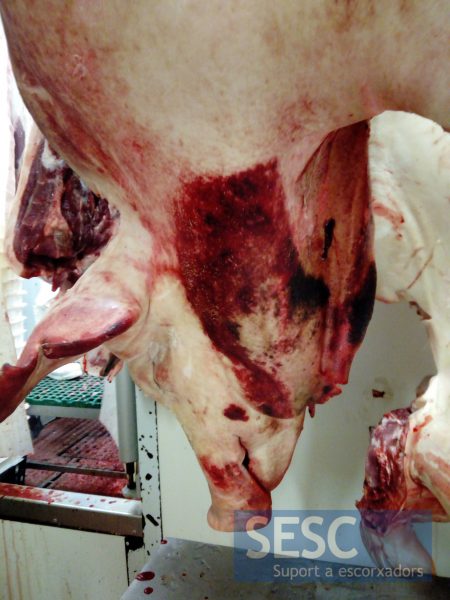
Hemorrhages in the ventral side of the neck.
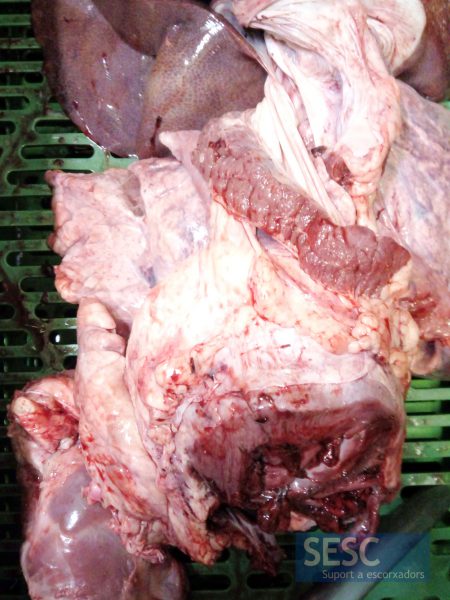
The animal presented a fibrous pericarditis, indicative of a septicemic process already resolved.
Case 2: A single animal, mixed race female of 6 months of age, with generalized hemorrhagic lesions on the skin, viscera and hemorrhagic lymph nodes. ASF/CSF were also ruled out, but there were no further lesions in the organs studied, other than haemorrhages that would explain the hemorrhagic diathesis.
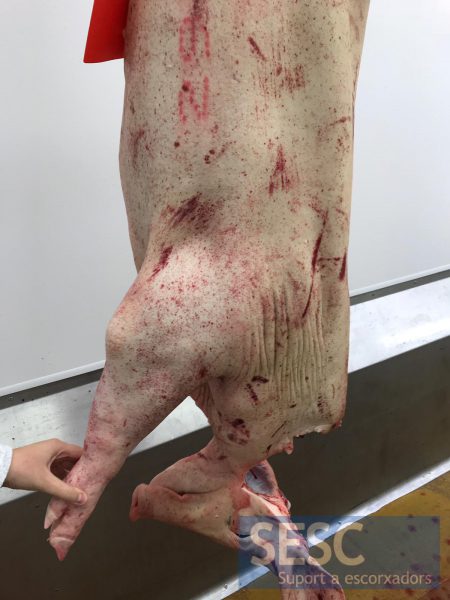
Generalized petechiae in the skin throughout the carcass.
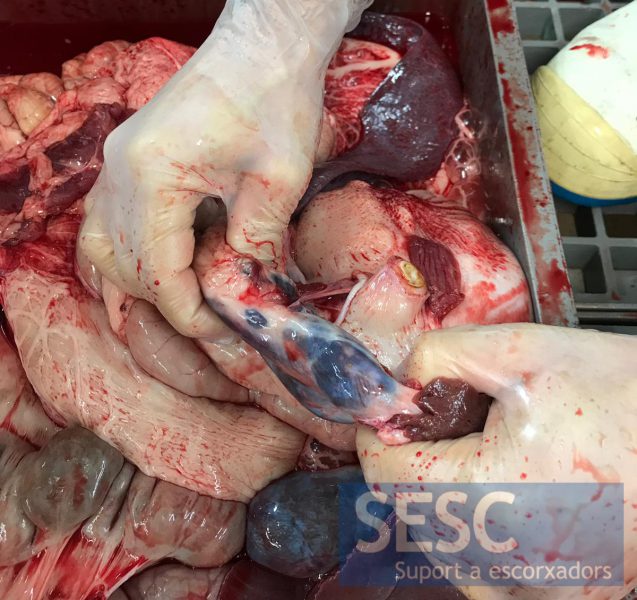
Hemorrhagic and enlarged gastrohepatic lymphatic nodule .
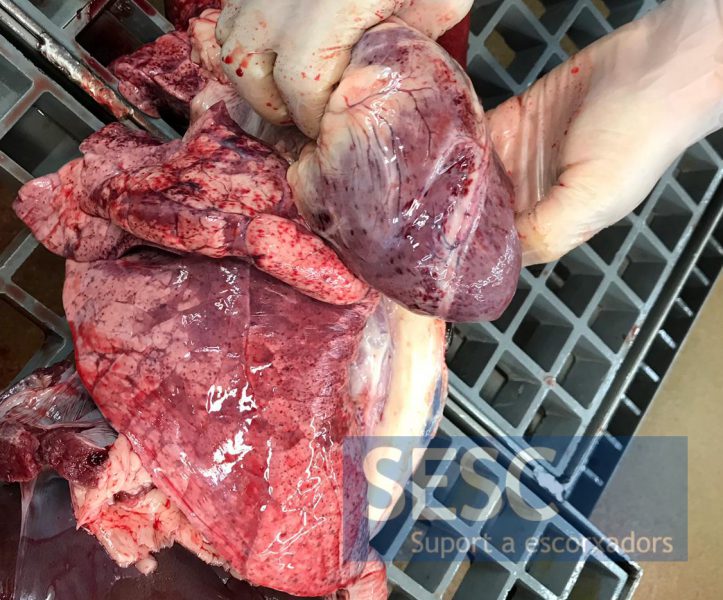
Petechiae in the epicardium and in the visceral pleura of the lung.
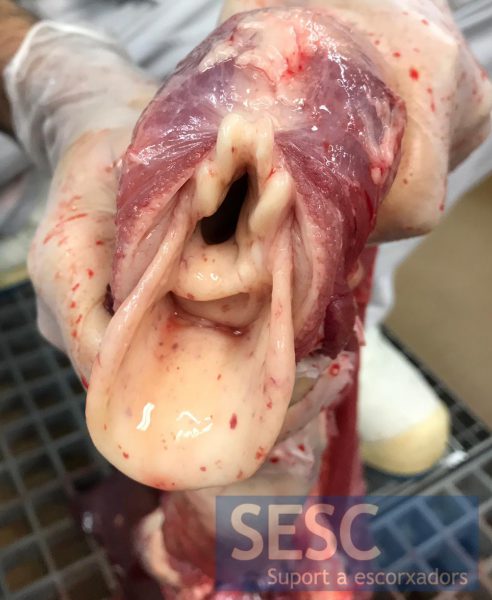
Petechiae in the mucosa of the glottis.
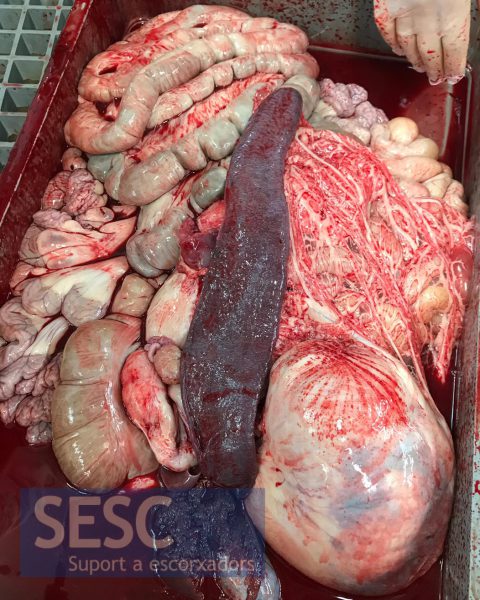
Spleen size was normal. Hemorrhages can be observed in the serosa of the gastrointestinal tract and the mesentery.












4 comment(s)
Buena tarde, muy interesantes estos casos, hemos tenido algunos en rastro, en donde se a descartado PPA Y PPC, me gustaría saber que dictamen le dan a ese tipo de canales en donde se descartan ambas patologías, aun descartándose, se decomisan las canales completas o es un decomiso parcial de partes afectadas?
Apto o no apto para consumo humano?
Saludos.
Gracias por tu comentario José Román. El dictamen lo determina cada inspector en base a la normativa y a su criterio en el momento de interpretar cada situación concreta. Nosotros sólo asesoramos a nivel de diagnóstico lesional. De todas formas la normativa señala que en canales con signos de enfermedad generalizada procede un decomiso total. Es importante establecer un buen diangóstico lesional para tomar la decisión mas adecuada.
Buenas tardes;
cuando se observa una canal con esas características ¿es motivo para decomisar la canal?
La presencia de signos que evidencien una enfermedad generalizada en la canal es motivo de de decomiso, si.